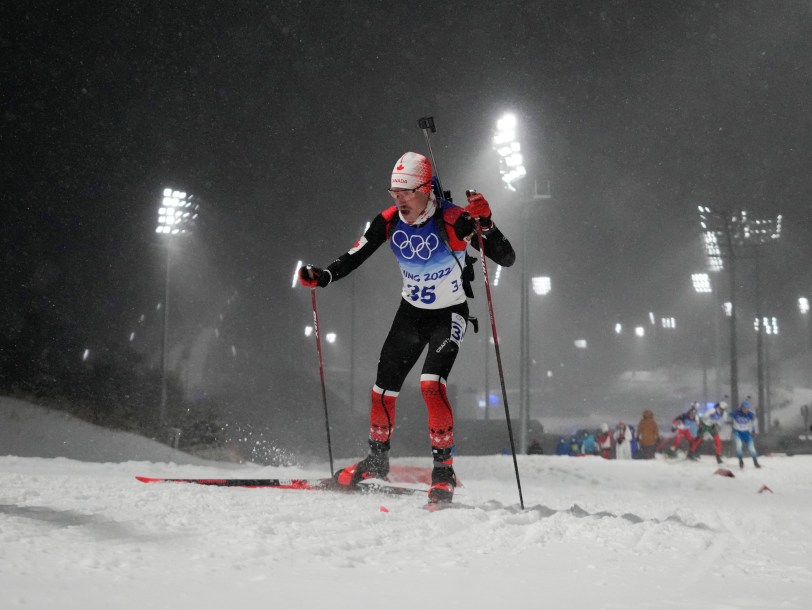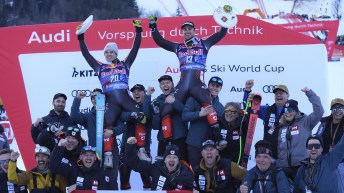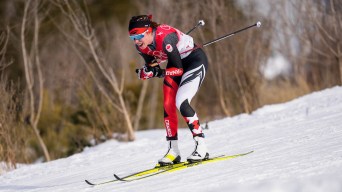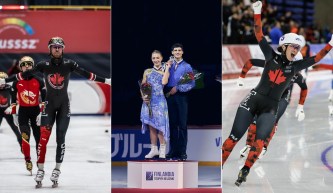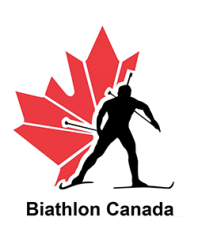Biathlon 101: Everything You Need to Follow Team Canada on the Range and the Snow
Biathlon, with its unique combination of skiing and shooting, has been part of the Olympic Winter Games for more than half a century. It followed its precursor, the military ski patrol, to become the fast-paced, highly technical sport we know today.
As one of the Canadian athletes currently preparing for Milano Cortina 2026, Adam Runnalls walks us through what makes biathlon so challenging and captivating. Runnalls made his Olympic debut at Beijing 2022, helping Canada to its best-ever result in the men’s 4×7.5km relay, finishing in sixth place.
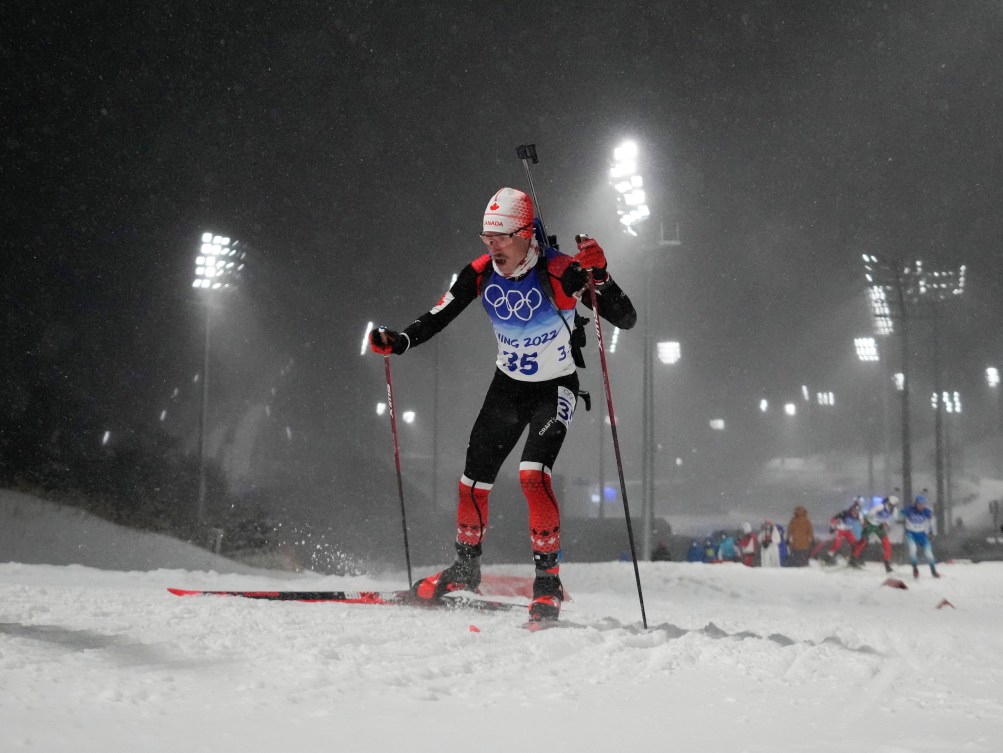
What is biathlon all about?
Biathlon combines two disciplines that require opposite physical states: high-intensity cross-country skiing and calm, precise rifle shooting.
Biathletes push themselves to their aerobic limit on skis, then must immediately bring their heart rate down to hit targets 50 metres away. That duality is what makes biathlon one of the most mentally demanding winter sports.
Runnalls explains how he makes that shift mid-race:
“I use mental and physical cues. I tell myself I’m a shooter now at a specific point on the range entry. I take my glasses off, put them on my head, and that’s the moment. Then I feel a wave of calm. I try to take my mind out of racing and into training mode.”
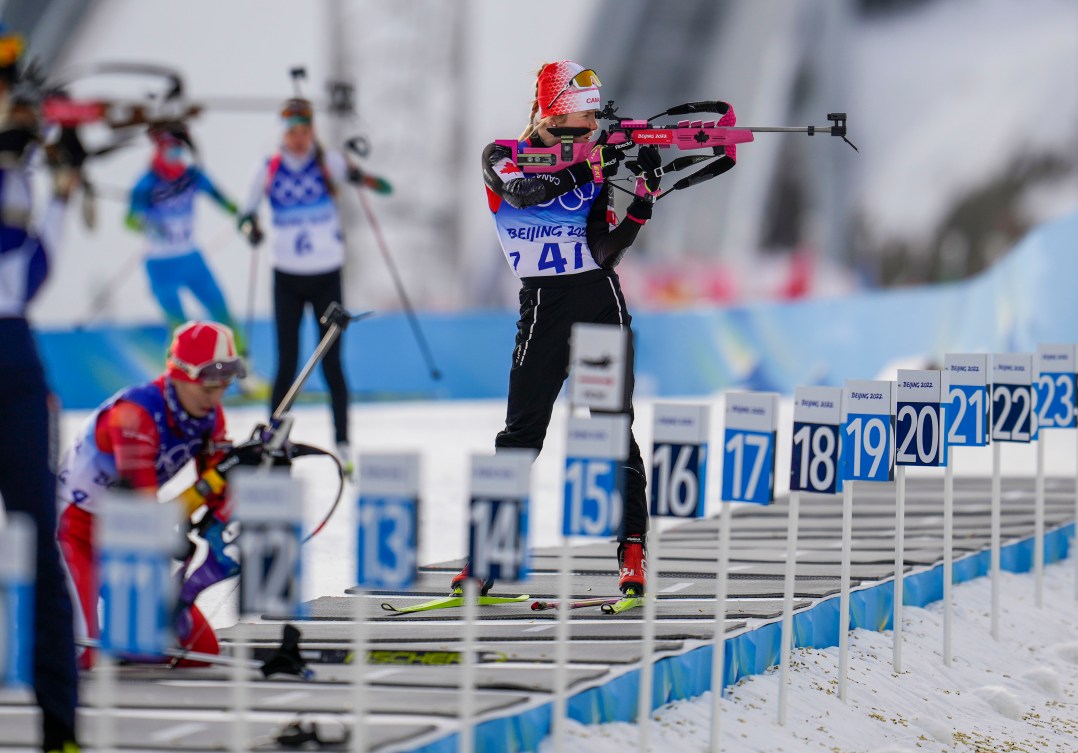
How the shooting works
Biathletes shoot from two positions during a race. In the prone (lying down) position, they aim at smaller targets with a 45mm hit area. In the standing position, the targets are larger at 115mm. All shooting takes place from a distance of 50m. Depending on the event, any missed target results in a one-minute time penalty or having to ski a 150m penalty loop while the clock runs.
What events are on the Olympic program?
There are 11 Olympic biathlon events, grouped into six categories: Sprint, Individual, Pursuit, Mass Start, Relay, and Mixed Relay. Here’s a simplified breakdown:
| Event | Total Distance | Skiing Laps | Shooting Targets | Penalties |
| Sprint | Men’s 10km / Women’s 7.5km | Men 3×3.3km / Women 3×2.5km | 2 x 5 targets | 150m penalty lap per missed shot |
| Individual | Men’s 20km / Women’s 15km | Men 5x4km / Women 5x3km | 4 x 5 targets | 1 minute penalty per missed shot |
| Pursuit | Men’s 12.5km / Women’s 10km | Men 5×2.5km / Women 5x2km | 4 x 5 targets | 150m penalty lap per missed shot |
| Mass Start | Men’s 15km / Women’s 12.5km | Men 5x3km / Women 5×2.5km | 4 x 5 targets | 150m penalty lap per missed shot |
| Relay | Men’s 4×7.5km / Women’s 4x6km | Men 3×2.5km / Women 3x2km | 2 x 5 targets (per skier) | 150m penalty lap per missed shot (after spare rounds used) |
| Mixed Relay | 2 Women x 6km + 2 Men x 7.5km | Men 3×2.5km / Women 3x2km | 2 x 5 targets (per skier) | 150m penalty lap per missed shot (after spare rounds used) |
Runnalls’ favourite: the Individual
Runnalls thrives in the longest and most punishing race on the program, the 20km individual:
“It’s the longest race, and I tend to be better when it’s longer. There’s a one minute penalty for every miss. A lot of people slow down their shooting to avoid them, but I keep the same pace, so I make up time on the range.”
How the events work
In the sprint, athletes ski three fast laps and stop twice to shoot, first prone and then standing. The clock never stops, so any missed target sends the athlete straight into a 150m penalty loop before they can continue. The fastest overall time wins.
The individual event is biathlon in its most traditional form. Misses are costly here, because each one adds a full minute to an athlete’s final time. With penalties this severe, even a single mistake can change the podium.
The pursuit takes the sprint results and turns them into a chase. The top 60 athletes line up in the exact order they finished the sprint, with the sprint winner starting first. Every other athlete follows based on their time gap with the winner. The first person across the finish line wins.
The mass start brings the top 30 athletes (based on World Cup standings and the above Olympic events) onto the start line at the same time. Everyone leaves together, creating one of the most tactical and head-to-head formats in the sport. For every missed shot, the athlete has to ski a 150m penalty loop while the time is running. As in the pursuit, the first competitor to cross the finish line is the winner.
The relay and mixed relay rely on teamwork. Each athlete skis their leg and tags the next teammate. Every leg includes two shooting stages, first prone then standing. Competitors carry three spare rounds of ammunition that they must load individually by hand if they miss any of their first five shots. If any targets remain standing after that, the athlete must ski a 150m penalty loop before continuing. The first team to have their final team member cross the finish line is the winner.
Rules every biathlon fan should know
Start procedures depend on the event. In the individual and the sprint, athletes begin at intervals, typically 30 seconds. The pursuit uses the sprint results to set start times, turning the race into a true chase. The mass start sends all 30 athletes off together. Relays also begin with a group start for the first leg, with each following leg beginning as soon as the previous athlete tags in. During the relay events, if an exchange occurs outside of the hand-over zone, the procedure must be repeated within the predetermined bounds.
Finish rules are straightforward. In the individual and sprint events, if two racers finish with the exact same time, they are tied. But in races where athletes compete directly against one another, such as the pursuit, mass start, and relay, a photo-finish camera is used to determine which athlete had the first part of their foot across the finish line first.
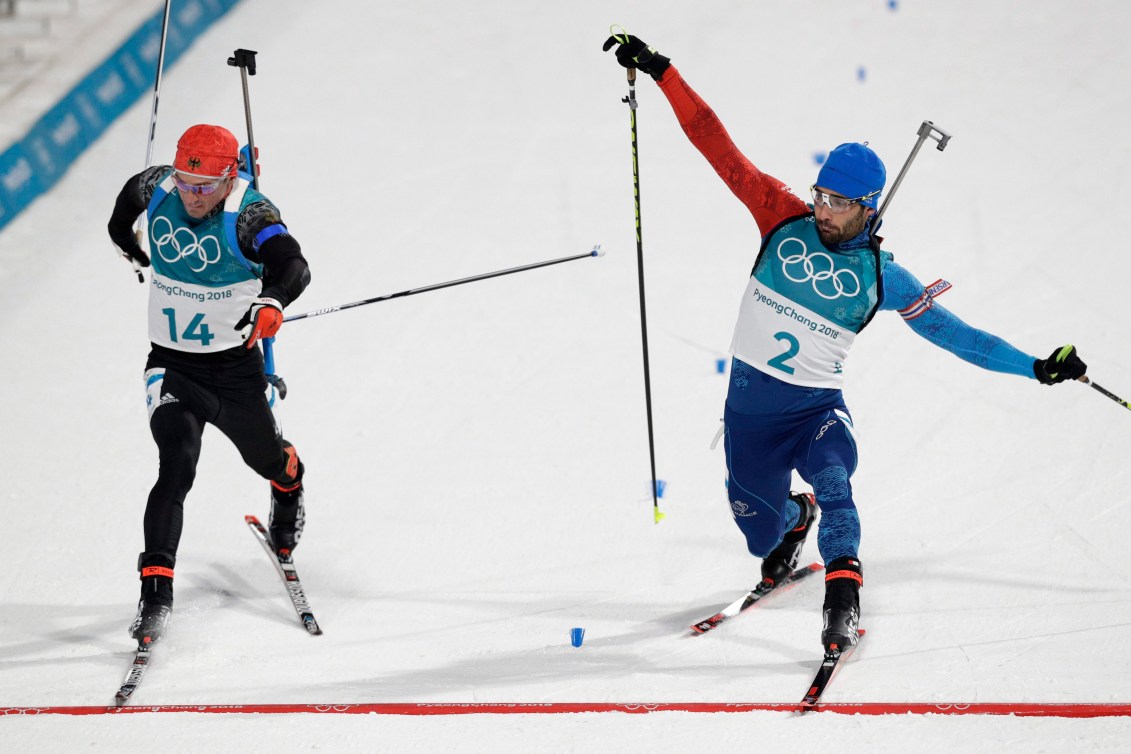
Team Canada on the road to Milano Cortina 2026
Team Canada has qualified eight quota spots (four men, four women) for Milano Cortina 2026 based on the Nations Cup ranking at the end of the 2024-25 season, which counted results from both the IBU World Cup circuit and the IBU World Championships. Runnalls describes just how hard securing those spots can be:
“Since 2014, we’ve had four starts at the Olympics, that’s the expectation. Wanting those four spots means everything. Making it a reality was tough. It was commitment from us as athletes and from the organization. We just kept chipping away, even when it looked like it might not happen.”
Canada’s Olympic biathlon history is highlighted by Myriam Bédard, who remains the country’s most decorated biathlete with three Olympic medals. She captured Canada’s first podium at Albertville 1992 (bronze in the 15km individual), followed by double gold at Lillehammer 1994 in both the 15km individual and 7.5km sprint.
Where biathlon will take place: Anterselva
The biathlon events at Milano Cortina 2026 will be held in Anterselva (also known as Antholz in German), a venue in northeast Italy near the Austrian border.
For Runnalls, it feels like a second home:
“I like it because it reminds me of Canmore. It’s high altitude, which I’m good at. The snow is great, it’s cold, and the course flows really well. I do well there. It’s also where I raced my first ever World Cup.”
Anterselva is also known for its massive crowds: 30,000 to 40,000 spectators pack the stadium during the biggest events.
Why you should watch biathlon
Biathlon is one of the most popular winter sports in Europe and Canada’s athletes hope to see that passion grow here.
As Runnalls puts it: “People always say they love watching biathlon at the Olympics. But it happens every year. It’s exciting, and we’d love to have a bigger fan base in Canada. Just give it a try.”

